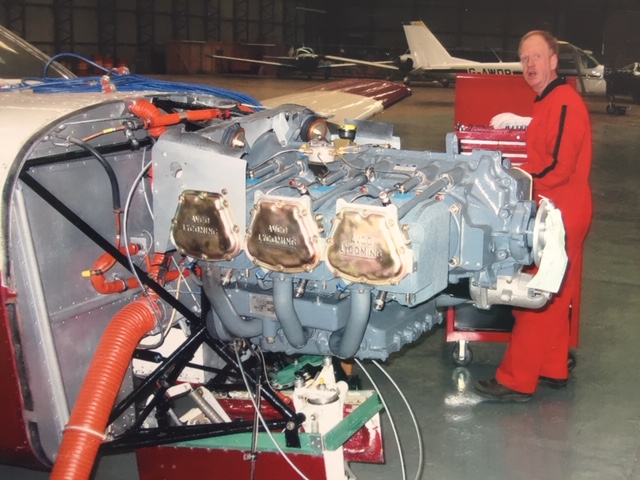Sep 1996 G-MOVI PA32R-301 (1983 model)
My client ‘AE’ ran M&E Supervision. His company provided production facilities for a handful of corporate clients including HSBC, Jaguar Cars and Allied Dunbar and over the years he was able to indulge his passion for flying to travel to venues independently of commercial airlines and avoid rigid travel schedules. My role was ‘safety pilot’ to ensure all went well and missions were accomplished with minimal ‘hassle’.
We departed Fowlmere 0600hrs and followed a familiar route Dover, Cambrai, Troyes, Dijon, Lyon, Montelimar, Avingnon, Le Luc St Tropez into Cannes. It took 4hrs 25mins. We got transported to our Hotel in St Tropez and loaded our rented Renault Espace with Camera gear and removed the rear seats to accept the Camera tripod.
Initially, I got to drive a new XK8 Convertible, practising following the Camera vehicle along the coastal roads, however, I was too tall and the top of my (then red!) hair was above the top of the windshield! I was relegated to driving the Espace and the cameraman got to drive the XK8 with AE filming from the rear of the Espace with the rear tailgate open. This appeared perfectly acceptable to the police and in fact we were routinely accompanied by two police motorcycle riders who rode ahead of us clearing traffic as we sped along the roads! It was a surreal experience driving along the Cote d’Azur in perfect weather with a motorcycle escort filming the XK8 in action!
We spent a couple of days filming and then it was time to fly home. As we drove to Cannes we could hear the thunder of the nearby thunderstorm echoing around the hills and there was a dark grey overcast towards the North. It was forecast to be a bit bumpy until Dijon.
As we climbed out of Cannes I stopped the climb at F060 as I could see that several cells were just North of our intended track and since the CBs were forecast to have vertical extent exceeding 15,000ft there was little point entering IMC and not being able to avoid a cell that otherwise we might see. I had filed IFR at F080 but decided to stop the climb at F060 as although below the base of the airway at that time it meant we could remain generally VMC(visual) and I recall Marseille Radar were very helpful and had radar contact with us. I was also very familiar with the route and recall F060 gave us a good safety margin above the MSA.
The turbulence was moderate and the sound of hail hitting the windshield quite noticeable and it was a relief as we turned North towards Montelimar that the sun broke through the dark ominous looking clouds to reveal blue sky. Like several times before when I looked back from where we had come I felt glad we were heading away from that weather rather than towards it!
The remainder of the trip was uneventful apart from having to check fuel calculations due to quite a strong (25kts) headwind which was killing our groundspeed to around 120kts until we were North of Longvic when it picked up by 10kts.The Saratoga has 102usg useable fuel and burns about 16.5usg/hr and although we could have made the trip in one hop it was going to take nearly 5hrs and we decided to drop into Troyes for a break and top up.
The Saratoga has one of the best engines I know of. It is a 6cylinder non-turbocharged Lycoming IO- 540 (That’s 540 cubic inches capacity!) and over many years flying this aircraft and it’s sister ships GROLF and GJPOT all of which we maintained and operated for rental at Modern Air for several years I can say it gave the least problems and coped well when the weather was inclement. By that I mean it would keep going without any fuss, through rain, sleet, snow and ice and provide a surplus of power when you needed it eg climbing out of bad weather or when the airframe and prop surfaces have been contaminated and your airspeed is decreasing(!).
Whilst emphasising if one encounters these conditions an error of judgement has likely occurred as no sensible pilot would fly a non de-iced aircraft deliberately into icing conditions(!), it is a fact that if you fly a lot in Northern Europe you will at some point encounter conditions either by accident or just bad luck which make you glad you have that 300hp Lycoming bolted to your prop!

Past clients might ask ‘what about GRIGH and GDCAV?’ Both later model(1997/1998) Saratoga aircraft, I also operated GDCAV which had the air-con option which meant it had a pair of thinner belts running off the flywheel, one for the alternator and one for the compressor. The alternator belt broke several times during our time operating the aircraft. Once in La Rochelle and since replacement requires prop removal it was pretty inconvenient! GRIGH(1998) was a great aircraft, however, it simply had the thinner alternator belt by design and this also came adrift several times during our operation of the aircraft. Furthermore both these later aircraft had electrically operated flaps. Both aircraft suffered failure of the flap motor GRIGH with the then owners daughter PIC; fortunately in our circuit at EGMA!
So, if you were to ask me which Saratoga would be my chariot of choice, I would choose the 1980-1984 model without the air-con option and a nice thick alternator belt and manually operated flaps! I would disable the ‘Gear Auto Extension’ feature fitted to the earlier aircraft as several times in adverse weather I have had the gear deploy during cruise when the fuselage mounted air pressure sensor has become contaminated and having detected what it thinks is an airspeed reduction causes the gear to extend! This can of course be avoided by disengaging it manually after take-off but just another item to forget!